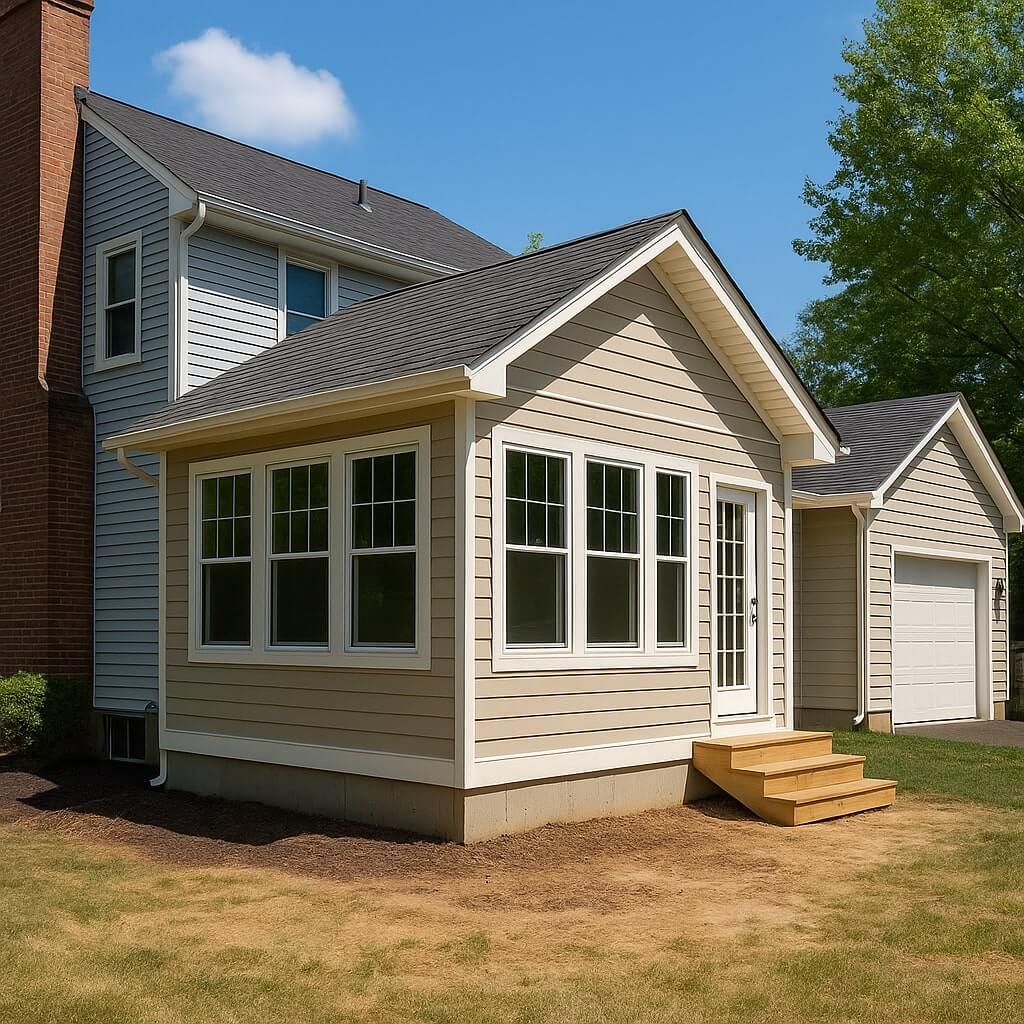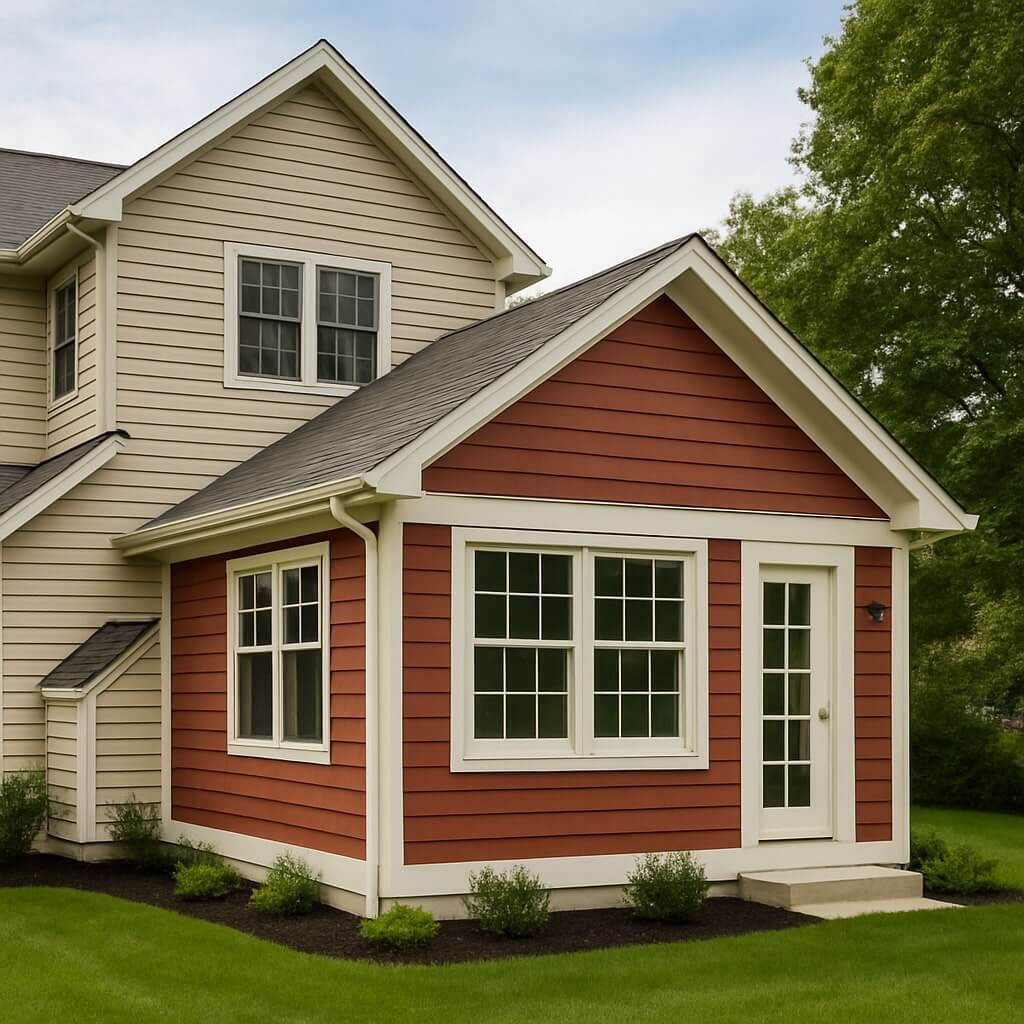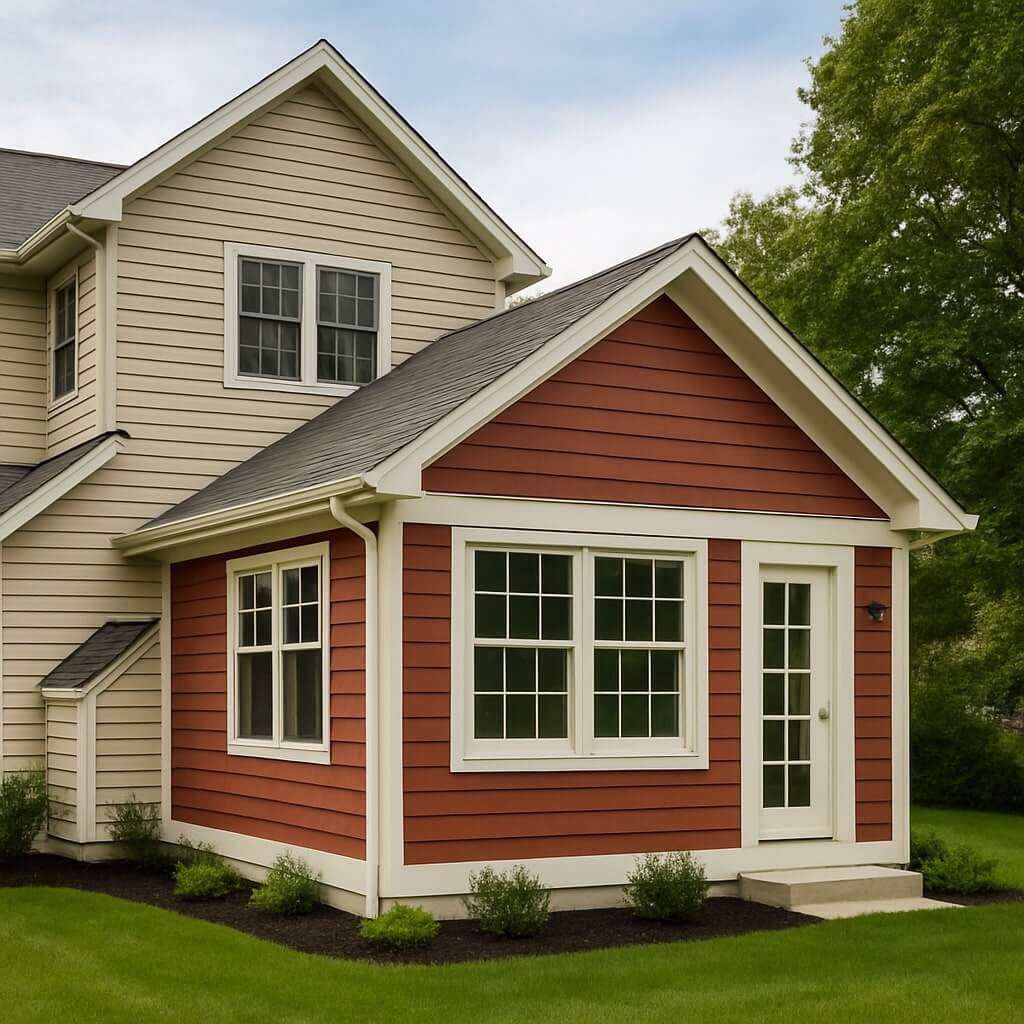Adding more space to your home isn’t just about comfort—it’s a smart investment. Whether your family is growing or you’re just in need of more functional space, a home addition can solve the issue without the hassle of moving.
In this guide, we’ll walk you through the main types of home additions, their benefits, and how to choose the right one for your needs and budget.
What Is a Home Addition?
A home addition is a construction project that increases the total square footage of a house. It can be as large as an extra floor or as small as a bump-out over your garage.
9 Popular Types of Home Additions
1. Conventional House Addition (Full-Room Extension)
A full-size addition adds one or more rooms to the side of your house, such as a new bedroom, bathroom, or even a second living room.
- ✅ Best for: Expanding overall living space
- 💰 Cost: High
- ⏳ Timeline: 2–6 months
2. Room Addition (Single Room Add-On)
This is a smaller version of the full-room extension. Think of adding a single bedroom or bathroom to the back or side of the house.
- ✅ Best for: Growing families
- 💰 Cost: Moderate to high
- ⏳ Timeline: 1–3 months
3. Bump-Out Addition
A bump-out is a small expansion of an existing room—typically 2 to 15 feet—to add space without major structural changes.
- ✅ Best for: Kitchen expansions, reading nooks, or larger bathrooms
- 💰 Cost: Low to moderate
- ⏳ Timeline: Few weeks to 2 months
4. Sunroom or Four-Season Room
Sunrooms are glass-enclosed spaces that let in tons of natural light. A four-season room includes HVAC systems, making it livable year-round.
- ✅ Best for: Lounges, indoor gardens
- 💰 Cost: Moderate
- ⏳ Timeline: 1–3 months
5. Garage Conversion
Turn your unused garage into a new living area like a guest suite, office, or entertainment room.
- ✅ Best for: Low-cost additional space
- 💰 Cost: Low to moderate
- ⏳ Timeline: 1–2 months
6. Second-Story Addition
Build upward instead of outward by adding a second floor or extending your existing one.
- ✅ Best for: Urban homes with limited lot space
- 💰 Cost: Very high
- ⏳ Timeline: 3–9 months
7. Basement Conversion
If you have an unfinished basement, convert it into a livable area such as a game room, home theater, or rental unit.
- ✅ Best for: Maximizing existing square footage
- 💰 Cost: Moderate to high
- ⏳ Timeline: 1–3 months
8. In-Law Suite
Also known as a granny flat, this is a fully functional mini-apartment attached or detached from your house.
- ✅ Best for: Multigenerational living
- 💰 Cost: High
- ⏳ Timeline: 2–6 months
9. Mudroom Addition
Adding a mudroom helps keep your main living areas clean and organized—perfect for busy families.
- ✅ Best for: Entryway organization
- 💰 Cost: Low
- ⏳ Timeline: Few weeks
How to Choose the Right Type of Home Addition
Consider the following factors:
- 🚧 Available lot space
- 📈 Return on investment
- 👨👩👧👦 Your family’s future needs
- 💸 Your budget
- 🏡 Local building codes
Benefits of Home Additions
- Increases property value
- Avoids the hassle and cost of moving
- Customizes your home for lifestyle needs
- Adds functionality (e.g., extra storage, living space)
FAQs: Types of Home Additions
Garage and basement conversions are usually the most cost-effective because the structure already exists.
Timelines vary based on size:
Bump-outs: 2–6 weeks
Room additions: 1–3 months
Full-size additions: 3–6+ months
Yes. Most structural changes require local building permits, inspections, and approvals.
Kitchens, bathrooms, and primary suites generally offer the highest return on investment.
Smaller projects like bump-outs or sunrooms may not require an architect, but larger additions should always involve one to ensure structural safety and compliance.
Final Thoughts
Choosing the right type of home addition depends on your lifestyle, goals, and property constraints. Whether it’s a mudroom or a second story, each addition offers its own unique value.




